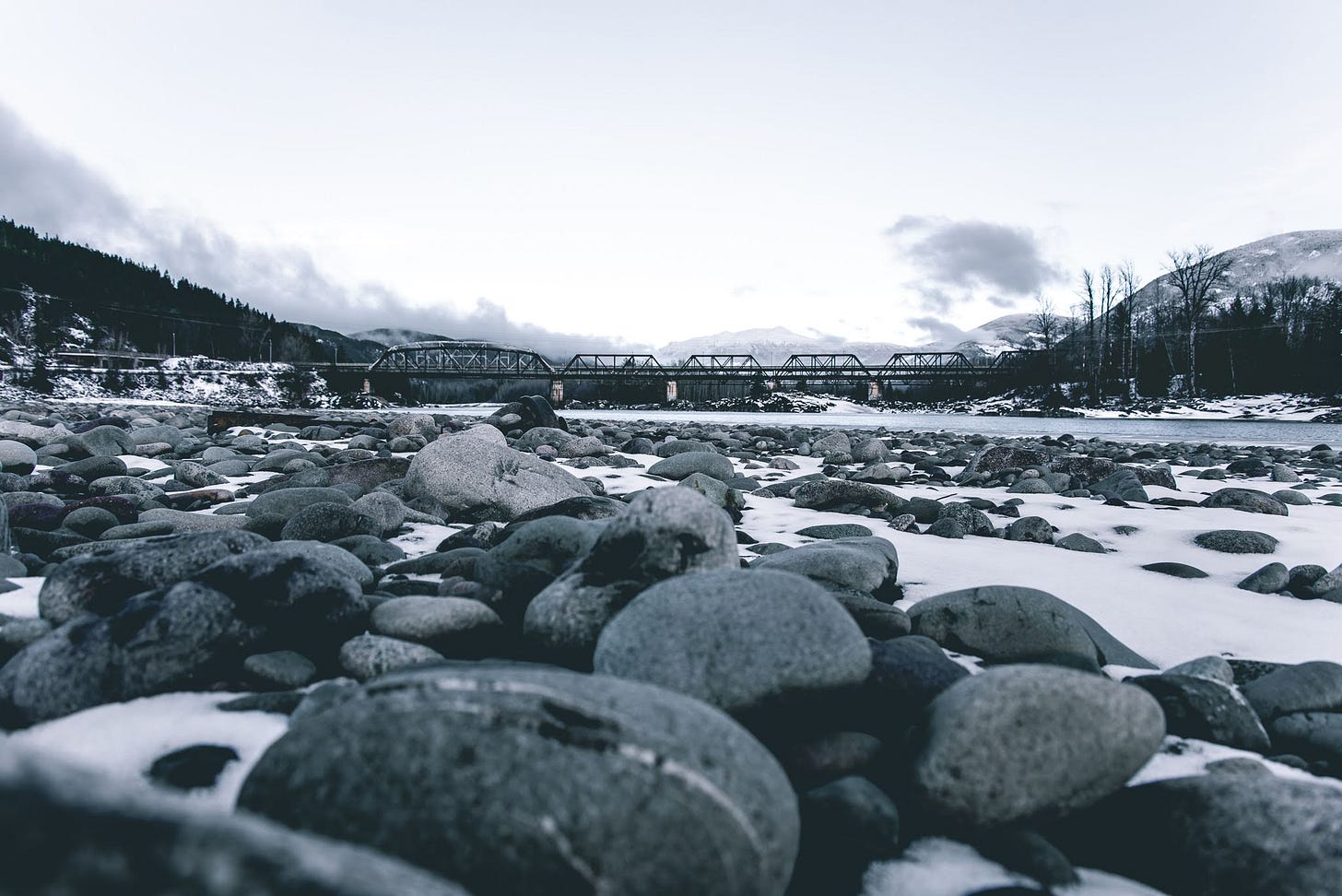Good morning!
Apologies for missing last week - I was a lot more optimistic about how productive I’d feel after my flu + booster shot on Monday and then ended up playing catch up on work stuff through Tuesday and so I ended up taking the week off from newsletter writing.
Anyways - we’re back and this week, we’re broadening the scope of North of Somewhere from the local issues around PG to the regional challenges of the North. Very exciting stuff.
Also: if your brain is like my brain and has hard times with words sometimes, you may be confused - we’re talking about deserts (like sand) not desserts (like cake or pie) - just want to make that clear up front for anyone wondering where the recipes are.
The cost of growing up in a small, rural town
Part 1 of this topic isn’t a deep dive, more so just an opportunity for me to say “hey this is a thing I’ve noticed and you should notice it too” and next week, I hope to go a bit further into some personal thoughts and feelings about this topic.
Educational deserts are a concept I became aware somewhere during my 4 years as a Student Recruitment Officer for UNBC and has floated in and out of my head since then. Most recently, it came up in a conversation between my fiancé (a southern Ontario kid) and me (a Terrace kid) when we were chatting about how we felt when we graduated high school and were making decisions about the rest of our lives.
Brittany, like many of her high school friends, lived at home during her time attending University - one of 3 (or 4) Universities within commuting distance of her childhood home (alongside countless colleges). This is a fact that she, much like I, didn’t spend a lot of time examining when making the decision but rather just rolled with the big influences of her (and most 17 year olds’) life - her parents and her friends. For most of the University-bound kids, living at home to save some money (while still having access to an abundance of options) was just baked in to the equation.
I grew up and graduated in Terrace - a town in Northwest BC of about 9000.
At the time I graduated from high school, our local college offered some University Transfer courses that could loosely net you about 2 years worth of very general credits into Arts/Sciences (that could only be described as a 2-year extension of high school) and some trades programs. The nearest University was about 600km at UNBC and beyond that, cities like Edmonton, Kamloops, Kelowna, and the Lower Mainland.
And so for me, and for any of my fellow grads, the prospect of pursuing any “options” came with leaving town, leaving family, and all the perks that come with that (free or subsidized rent, food, parental support, familiar surroundings, etc).
This may not seem like a novel thought because I think we, as Northerners (and rural Canadians) are kind of numb to this idea of the desert. We can rationalize the cost/benefit ratio of city living versus rural living in our adult lives but I really don’t know if we spend enough time thinking about the way our geography can generationally impact our opportunities and our kids’ opportunities.
Deserts come in many shapes and sizes
In doing a bit more reading for this newsletter, I’ve come to understand there is not a broadly accepted UNIVERSAL definition of what qualifies as an educational desert (especially in a Canadian vs American context), but rather there seems to be a consensus that if you’re graduating high school and have only 1 option for post secondary in your town, and it’s an underfunded community college with limited options, you’re definitely in a desert.
It’s worth noting that by a LOT of scholar’s definitions, Prince George would certainly qualify as a desert - with one small University and College but given the broader context of the region, I’d say we’re the oasis for the region, but still a desert in the broader context of access to Post Secondary.
This quote pulled from an AceNet paper does a good job of adding some context:
Akin to “food deserts”—communities where access to nutritious and affordable food is scarce—there exist “education deserts” where college opportunities are quite literally few and far between. As scholars have observed, food deserts do not occur at random but are systematically drawn along lines of race and class where low-income neighborhoods and communities of color tend to have the poorest access to affordable and nutritious food, resulting in poor health conditions…education is no different: geography can be destiny when opportunities are richly available for some… rare or even nonexistent for others.
Source: AceNet
What to expect in Part 2
So that’s all I wanted to put out there for this week. Hopefully, just a chance for you to reflect on yourself and your experience in high school (whether you’re a city kid, a rural kid) and some of the options you felt like you had in front of you (maybe you wanted to go to work right away, maybe it was college, maybe it was University, etc).
I want to emphasize that I’m aware that pointing out the challenges of rural living is not a novel, or extremely interesting take but rather, this specific instance of it is worth reflecting on.
For part 2 of this, I want to pull a part some of Nick Hillman’s article: Place Matters and how, even though it is based in American context, the concepts feel very relevant out here. I also can’t guarantee that Part 2 will come next week - I have a couple other things I want to get out of the way that feel a bit more pressing.
Okay! Thanks for reading. Talk to you next week.
Alright. Bye now.






